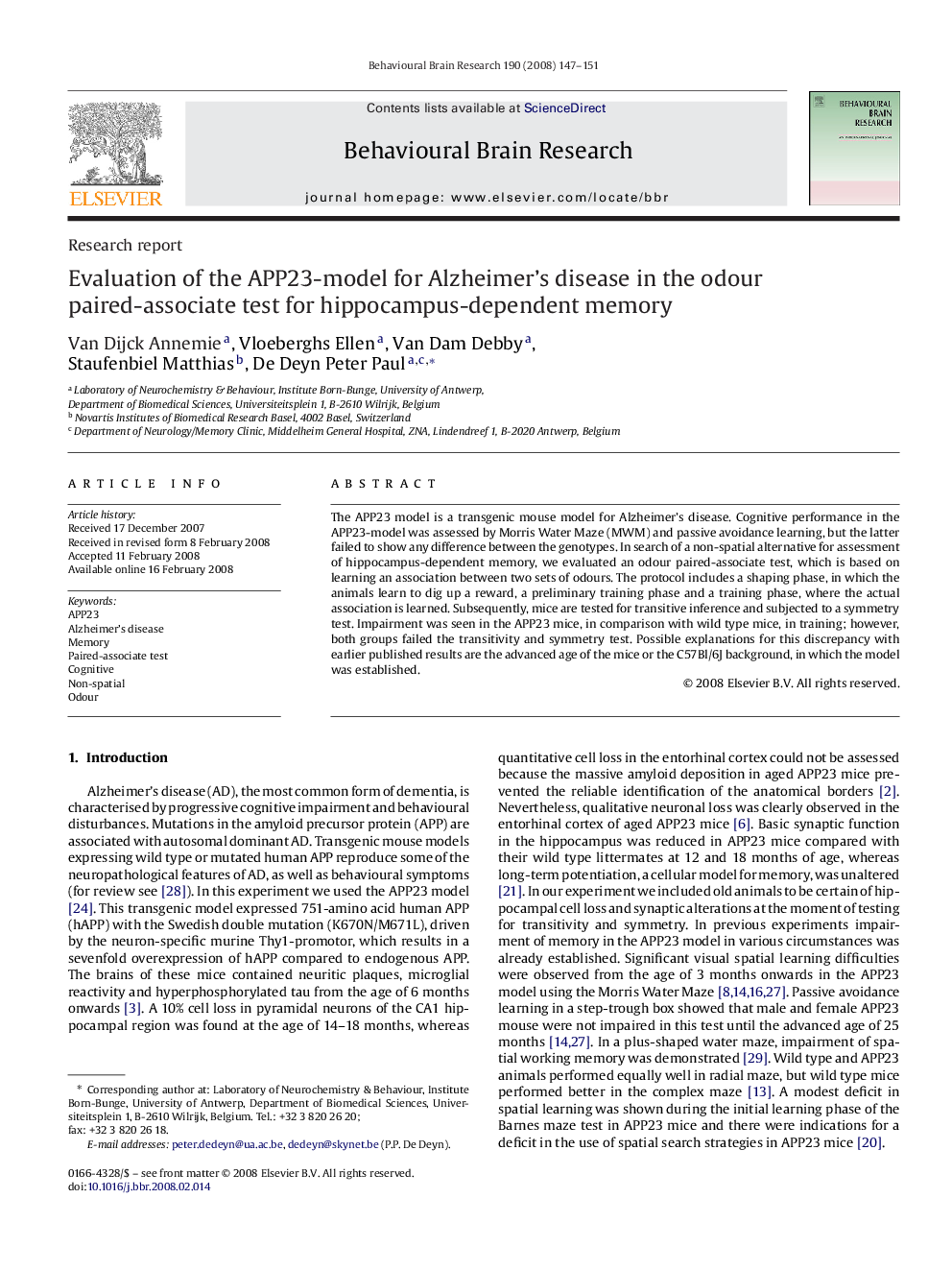| Article ID | Journal | Published Year | Pages | File Type |
|---|---|---|---|---|
| 4315242 | Behavioural Brain Research | 2008 | 5 Pages |
The APP23 model is a transgenic mouse model for Alzheimer's disease. Cognitive performance in the APP23-model was assessed by Morris Water Maze (MWM) and passive avoidance learning, but the latter failed to show any difference between the genotypes. In search of a non-spatial alternative for assessment of hippocampus-dependent memory, we evaluated an odour paired-associate test, which is based on learning an association between two sets of odours. The protocol includes a shaping phase, in which the animals learn to dig up a reward, a preliminary training phase and a training phase, where the actual association is learned. Subsequently, mice are tested for transitive inference and subjected to a symmetry test. Impairment was seen in the APP23 mice, in comparison with wild type mice, in training; however, both groups failed the transitivity and symmetry test. Possible explanations for this discrepancy with earlier published results are the advanced age of the mice or the C57Bl/6J background, in which the model was established.
